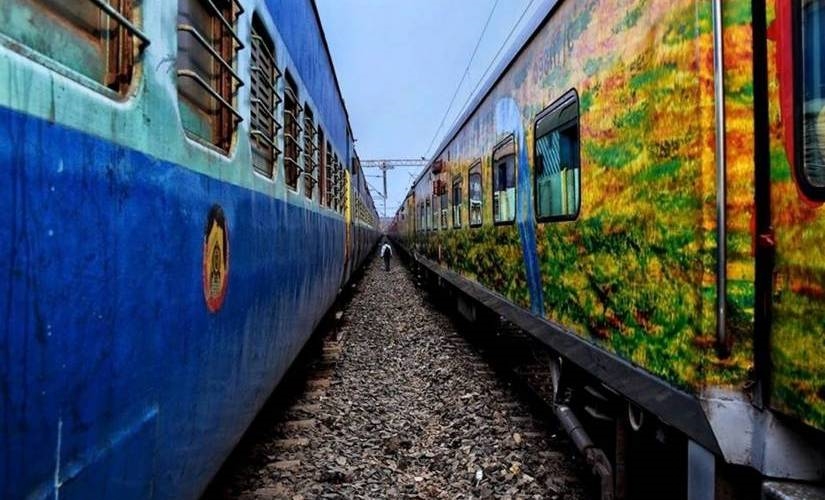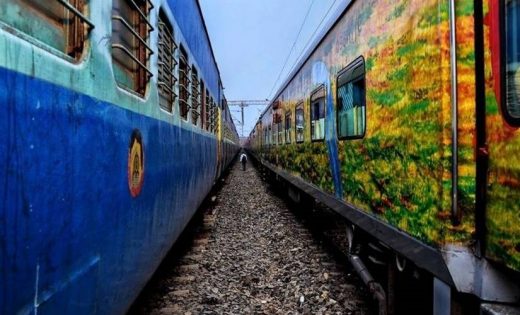Hydrogen-Powered Trains Promise for Green Economy in India
Hydrogen-Powered Trains Promise for Green Economy in India

In India, Rail transport is the second most used mode of travel that consumes 2.8 billion liters of diesel annually. The railways’ fuel bill is touching about Rs 32,000 crore a year, of which the expenditure on diesel is about Rs 18,000 crore. Here are hydrogen-powered trains that promise a green economy in India.
According to data compiled by the Potsdam Institute for Climate Impact Research (PIK), the Greenhouse gas emissions of India stood at 3,571m tonnes of CO2 equivalent (MtCO2e) in 2015.
The degradation of non-renewable energy resources is rampant world over. We can only guess every generation to be more unfortunate than the people before them unless technology helps us find an effective solution to the crises. The green crises will affect everyone globally.
Keeping this in view, Indian Railways, the world’s largest passenger carrier has set in motion towards a green economy through the advent of hydrail. Hydrail is a train that uses hydrogen for propulsion. It is expected to be functional on a suburban passenger train route by the end of 2021. Could this effort in Indian work elsewhere in the world?
Why Hydrogen?
Present greenhouse gas emission levels need to be curtailed to at least 80% to avoid significant global climatic impact. Global climate impact is becoming increasingly tricky about the growing demand for energy? The need for more power is due to the ever-expanding population and urbanization.
In such a scenario, hydrogen can become a promising fuel for various energy-demanding areas shortly.
- Hydrogen is safe to handle and use as a transport fuel.
- Unlike diesel trains, hydrogen-propelled engines do not emit carbon dioxide gas but only steam and water droplets resulting in minimum low well-to-wheel GHG emissions in comparison to both diesel and electric power.
- Hydrogen can be produced economically from naphtha as a feedstock in refineries, from coke oven gas at collieries, or preferably from biomass wastes.
- It offers lesser consumption rates in comparison to diesel.
- Hydrogen-powered trains emit low levels of noise, ensuring smooth travel.
Development in the World
The world’s first passenger train powered by hydrogen was launched in September 2018 in Salzgitter (Germany) named Coradia iLint.
The Coradia iLint train was designed by Alstom, and has been considered unique for its combination of elements. The significant contribution of this train is:
- Clean energy conversion.
- Flexible energy storage in batteries.
- Smart management of available energy.
- Providing a speed of 140 mph.
Specially designed for operation on non-electrified lines, hydrogen fuel-cells enable clean, sustainable train operation while ensuring high-efficiency levels. Alstom claims that such a train can run for around 1,000 kilometers on a single tank of hydrogen.
Subsequently, UK’s first hydrogen train HydroFLEX was launched in June 2019, which was the result of a fitting fuel cell system to a Class 319 train. This train could run on conventional electrified routes, as well as independently avoiding the need to modify drivers’ controls.
Development in India
The proposed hydrogen-powered train in India will be a 300 kW fuel-cell-hybrid locomotive. The locomotive will combine the environmental advantages of Hydrogen as an energy source with the lower infrastructure costs of a diesel-electric engine.
The train will have four passenger coaches operating at up to 140 km/hr speed. One coach will carry the hydrogen gas cylinders, fuel cells, capacitors, batteries, and DC converters. Hydrogen will be fed from the cylinders to the fuel cells, and the power output will drive the train.
Such a hybrid locomotive will be the most powerful fuel cell locomotive manufactured yet. The fuel cell locomotive shall be manufactured by Diesel Loco Modernization Works (DMW), Patiala.
The power plant shall be obtained from an international supplier, whereas the Lead-acid battery system and roof-mounted lightweight compressed hydrogen storage system. The hydrogen will be taken from an indigenous supplier as declared by Indian railways.
For now, hydrogen shall be obtained from industries where it is produced as a byproduct. The next stage can be the incorporation of a system which shall produce hydrogen onboard using water-splitting technologies with the use of nanomaterials.
Another green alternative is to produce hydrogen from biogas or feedstock, which is under experimentation.
Impact
- Cost – Buying/manufacturing hydrogen-powered trains are expensive in comparison to diesel locomotives. Still, the operational and maintenance cost would be lower in the long run, given the rechargeable nature of lithium-ion batteries.
- Speed – These hydrogen-powered trains are capable of running at a speed of 140 km per hour, which is a competitive speed for diesel and electric trains.
- Green economy – The incorporation of hydrogen propulsion in trains will reduce vehicular pollution.
- Revenue – Hydrogen-powered trains make negligible noise and shall provide modern-day facilities which shall attract more passengers to travel by trains.
- Capacity – Hydrogen-powered trains can carry up to 300 passengers at one time, which shall improve vehicular capacity.
Challenges
- Production – Hydrogen is not freely available in the atmosphere. It, therefore, requires an energy input and a series of procedures to produce, store, and then use it. Challenge is to come across the most economical and convenient one through a fair amount of research and development.
- Refueling infrastructure and distribution – If hydrogen has to be refilled into the onboard cylinders, technology and distribution infrastructure need to be developed.
- High production cost – Although hydrogen-powered trains appear to be beneficial in the long run; they are also more expensive than diesel locomotives with a cost of around Rs. 53.29 Crore per train
- Uncertainty about applications in freight – The technology is powerful enough to shuttle passenger services. Yet, it is not yet clear whether the same can be viable for pulling heavyweight of the freight traffic.
Conclusion
The year 2020 is expected to become the year of the hydrogen fuel cells in India. Certainly, this will be the biggest driving force in achieving the electrification target of the entire rail network by 2024. This will make it the first railway in the entire world, of this scale and size, to be run entirely on electricity. So far, 37,500 km (58%) of routes are electrified with 25 KVAC electric traction in India.
Looking ahead, hydrogen is expected to be the most promising technology to give birth to a zero-emission railway network in India by 2030 for a more sustainable future.
The post Hydrogen-Powered Trains Promise for Green Economy in India appeared first on ReadWrite.
(51)


